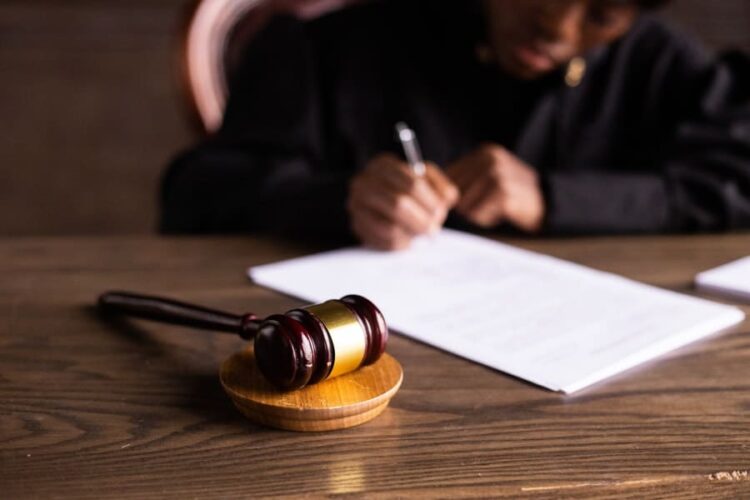If you’ve been arrested and charged with a crime, the first thing that will happen is an arraignment hearing. An arraignment is not a trial or even a preliminary hearing. It’s simply an opportunity for the accused to hear the charges against them read aloud and then enter a response. Arraignment is usually just a formality, but it’s also an opportunity for your defense attorney to get important information before moving forward in your case. You might be wondering if you need to hire a lawyer at this point (probably). But don’t worry—we have all the answers you need about an arraignment and what it means for you as an individual. Keep reading to learn more about what goes on at an arraignment, what to expect from your arraignment hearing, and how we can help you get ready for yours!
How To Get Your Charges Dropped At An Arraignment Hearing
You need to hire a knowledgeable criminal defense attorney.
Arraignment is not the same as an “initial appearance” or a “pretrial hearing.” It’s just an opportunity for the prosecutor to present their case and for you to enter a response. It’s normal for the judge to ask you questions in court about whether you understand what’s happening with your case and whether you understand the charges against you. You may also be asked if you agree with everything that was said, but there are no promises that this will happen. The arraignment is not a trial, and it doesn’t mean that your case has been decided. All it means is that the prosecutor has finished presenting their evidence, and now it’s time for your lawyer to make their arguments in court.
You need to be prepared for an arraignment hearing
Arraignment hearings are very informal, so there isn’t any reason why you should be nervous about what’s going on or what might happen next! The best way to prepare yourself is by gathering as much information as possible before your arraignment hearing so that your lawyer can make their arguments in court. Here are some things we recommend checking out:
You have the right to speak during the arraignment hearing.
Before the beginning of the arraignment, you will likely be given a chance to speak—this is called “the examination of witnesses.” This might include questioning witnesses about what happened before or during your arrest, asking them questions about their testimonies, or simply asking them to repeat their testimony. You will also have a chance to make a statement, which is your opportunity to talk about what happened in the case. This is not a trial, so it’s important that you still maintain your right to remain silent and not answer any questions that may incriminate you.
Your arraignment hearing will likely be held in a courtroom
There are many different types of courtrooms, but they all have the same basic structure: a judge’s bench with an area for the defendant to sit at and speak with counsel, jury boxes for potential jurors (if applicable), chairs for those who are defendants (if applicable), and a witness stand where witnesses can testify from behind a one-way mirror (if applicable).
You will be informed in writing whether you’re being charged
After the arraignment hearing is over, you’ll receive written notice from the judge explaining what happened during your arraignment hearing and whether or not you were charged with a crime. If there were no issues raised about your case during the arraignment hearing, then there won’t be anything in writing. If there were issues raised about your case during the arraignment hearing, then we’ll get written notice as well so that we can prepare for trial!
We will file motions on your behalf.
We will file motions on your behalf if we believe that additional evidence was presented at trial that was favorable to our client and should have been presented at arraignment. If we don’t file any motions, you will be found guilty in the court of law. If you’re found guilty by a jury, the judge will then determine your sentence.
You will be informed about what’s going to happen at trial
We’ll let you know that we’re filing a motion for a new trial or for a reduction of charges in addition to advising you about what’s going to happen at trial as well as when your trial is likely to occur.
You will be informed about the outcome of your case
The outcome of your case is not predetermined, so it’s important that you stay tuned in and follow up with us on any updates that are made on your case. We will let you know if there were any developments and if we were able to get all the evidence necessary for a successful appeal, including briefs and other materials related to our appeal strategies.
What Happens At An Arraignment Hearing?
The judge will determine whether or not you’re being charged with a crime
The arraignment is the first step in the criminal justice process and it’s the point at which you’ll be formally charged with a crime (if applicable). The judge will determine whether or not you’re being charged with a crime and if so, what the charges are.
A bond hearing will occur
If there is enough evidence to charge you with a crime, then the judge will have to decide if you should be released on bail before trial or if you should be kept in jail until your trial date. In this instance, we’ll try to get your bond reduced as much as possible while still allowing us to get your trial date scheduled as soon as possible.
The prosecutor and defense attorney will present arguments
After the judge determines whether or not there’s enough evidence for you to be charged, both sides of your case will present arguments about bail and about how much your sentence could potentially be after trial (if applicable).
You will receive written notice about what happened during the arraignment
After all of this has been completed, we’ll provide written notice of what happened during arraignment and whether there were any issues that were raised during the arraignment that required us to file motions on your behalf (if applicable).
You will receive notice about what’s going to happen at trial
We’ll let you know that we’re filing motions on behalf of our client and letting you know what the next steps are going to be.
Why You Should Hire A Lawyer At Your Arraignment
You may not be eligible for bail
If you’re not convicted of the crime, there’s a good chance that you won’t have to pay any bail. Bail is set at a certain amount, and if you’re not charged with a crime, then it could be set as low as $500 or even lower. If you are charged with a crime, then your bail will likely be higher than that. If your bail is set at $100,000 or above and there’s not enough evidence to prove your guilt beyond a reasonable doubt (which is the standard required for conviction in most states), then you’ll probably go to jail until your trial date which could potentially be months away.
There will be motions filed on your behalf
If we file motions on behalf of our client and if they’re successful (which they often are), then the judge will have to reduce bail or release our client on bond while we work on getting all the evidence necessary for an appeal ready for trial. In this case, we’ll try to get bail reduced as much as possible while still allowing us to get our trial date scheduled as soon as possible.
You may have other issues that need attention
If you have any other issues that need attention before trial (like having outstanding warrants, being named in other proceedings, etc.), then there’s always the potential that these matters could come up during arraignment and require us to file a motion(s) on your behalf. If this happens, then you’ll receive written notice of what was done and when it happened.
You may end up getting a trial date earlier than expected
If you’re charged with a crime and there’s enough evidence to prove your guilt beyond a reasonable doubt, then it’s possible that you’ll end up getting a trial date before you’d anticipated. This means that you may have to wait even longer for the trial date to be set and to get your case resolved. If this happens, we’ll let you know as soon as possible.
You may end up having an extended stay in jail while waiting for the trial date
If the judge is convinced that there’s enough evidence against our client beyond a reasonable doubt, then they’ll set a trial date on or before the next available day (usually within two months) after arraignment. If there are other issues such as bail being set at too high of an amount or any other reasons why our client would need to remain in jail until their trial date, then that information will be provided in writing through our letter sent after arraignment.
Bottom Line
Arraignment is a critical stage in the criminal process. It’s the point at which you’re charged with a crime and given the chance to enter a plea. It’s also the time to hire a lawyer if you haven’t yet. Arraignment is a critical stage in the criminal process. It’s the point at which you’re charged with a crime and given the chance to enter a plea. It’s also the time to hire a lawyer if you haven’t yet. If you’re charged with a crime and don’t have a lawyer, you should consider hiring one as soon as possible.










